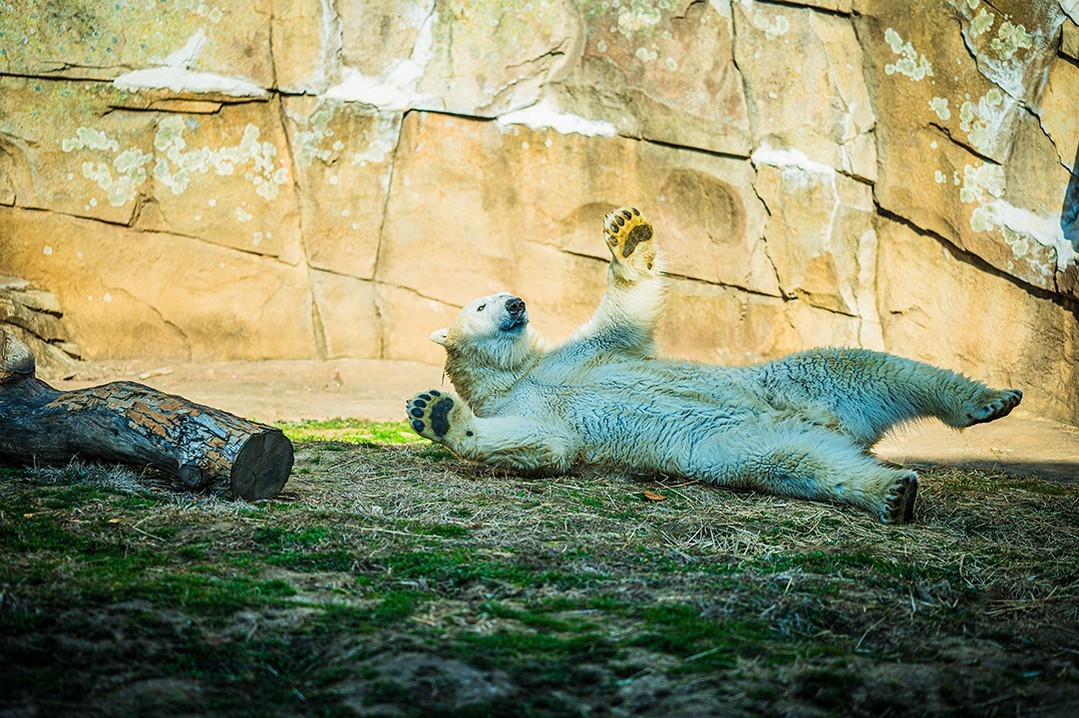– The rescue and rehabilitation of Qannik, the polar bear, after being separated from her mother on the North Slope in 2011.
– The role of @USFWS in Qannik’s remarkable journey from vulnerable cub to a resident of @LouisvilleZooOfficial.
– Qannik was introduced to the cooperative breeding program at @LouisvilleZooOfficial with Bo, a male polar bear from @HenryVilasZoo, to aid in species conservation efforts.
– The significance of cooperative breeding programs in conserving endangered species like the polar bear.
In the vast, rugged terrains of the North Slope, a poignant story unfolded in 2011. A young polar bear cub, later known as Qannik, was in a vulnerable situation, separated from her mother and sibling. This separation at such a critical, dependent stage of her life presented immediate threats to her survival. Recognizing the gravity of the situation, the U.S. Fish and Wildlife Service (@USFWS) initiated a rescue operation to ensure the cub’s survival.
The decision to intervene was based on thorough assessments by wildlife experts who determined that Qannik could not survive in the wild without maternal care. Following her rescue, she was placed under the care of the Louisville Zoo (@LouisvilleZooOfficial), where she received the necessary medical attention and a nurturing environment to thrive.
Qannik’s journey from a vulnerable cub to a thriving adult polar bear is a testament to the collaboration between various wildlife conservation agencies and organizations. Her relocation to the Louisville Zoo marked the beginning of her new chapter, providing her with a safe habitat that mimics the natural environment as closely as possible. Here, she became a beloved figure, symbolizing the plight of her endangered species to visitors and raising awareness about the challenges polar bears face due to climate change and habitat loss.
Years of discussions and planning concerning Qannik’s future culminated in an exciting development. The Louisville Zoo announced her participation in a cooperative breeding program, pairing her with Bo, a male polar bear from the Henry Vilas Zoo (@HenryVilasZoo). This decision represents a significant stride in conservation efforts to bolster the polar bear population, which is classified as vulnerable by the International Union for Conservation of Nature (IUCN).
Cooperative breeding programs are crucial in conserving endangered species, providing structured environments that enable carefully managed breeding. These programs aim to maintain genetic diversity, augment population numbers, and, ideally, prepare animals for potential reintroduction into the wild. However, this latter goal remains complex for species like polar bears, which face rapidly changing arctic environments.
The pairing of Qannik with Bo through the cooperative breeding program at the Louisville Zoo serves a dual purpose. It contributes to the genetic diversity necessary for a healthy polar bear population while educating the public about the importance of conservation efforts. The story of Qannik, from rescue to becoming part of a critical conservation effort, underscores the impact of human intervention in safeguarding the planet’s biodiversity.
Conservation efforts such as these are essential, particularly for species like the polar bear, which faces significant threats from climate change. As sea ice continues to recede, polar bears are forced to cover greater distances in search of food, leading to increased energy expenditure and reduced fat reserves crucial for survival and reproduction. The situation is dire, and the conservation community continues to search for strategies to mitigate these challenges.
Qannik’s story is a shining example of how concerted efforts can provide hope for endangered species. Her journey from a helpless cub to a participant in a breeding program aimed at conservation illustrates the power of collaboration, dedication, and humanity’s role in safeguarding our planet’s wondrous inhabitants. The Louisville Zoo, along with @USFWS and other partners, exemplifies how zoos and wildlife agencies can work together to care for individual animals and contribute significantly to broader species conservation goals.
As climate change continues to pose a monumental challenge to polar bears and other species, stories like Qannik’s are vital. They highlight the importance of wildlife conservation efforts and inspire individuals and communities to support these critical endeavors. The cooperative breeding program involving Qannik and Bo at the Louisville Zoo is not just about the future of these two polar bears but also a beacon of hope for preserving their species and the broader ecosystem they represent.
*****
Source Description
Qannik, the polar bear, made national headlines in 2011 when she was found on North Slope after she was separated from her mother and sibling. Realizing she could not survive alone, @USFWS began a rescue operation. A few months later, she found her home at @LouisvilleZooOfficial.
After years of discussions with various agencies and organizations, the Zoo announced that the rescued polar bear Qannik can finally join the cooperative breeding program 🎉. Her mate will be “Bo,” a male polar bear who came to the Zoo from @HenryVilasZoo.
In Connect, discover how this decision will contribute to critical species efforts. 🔗 Find the link in our bio!


